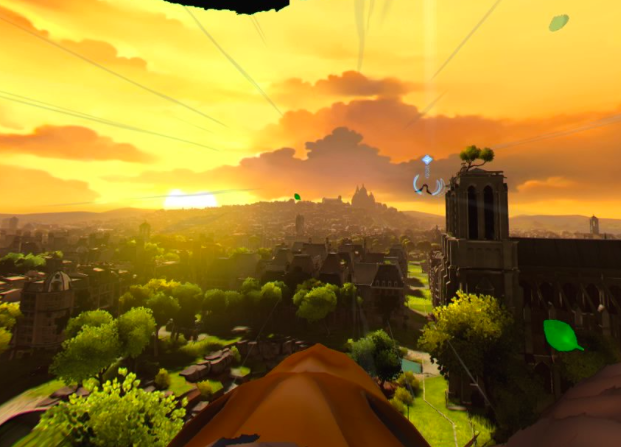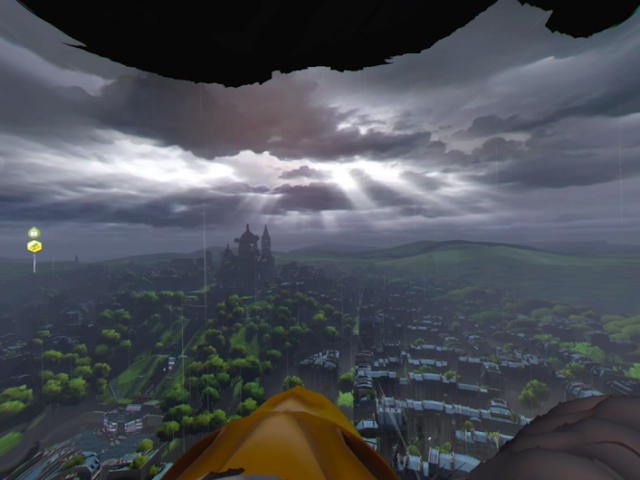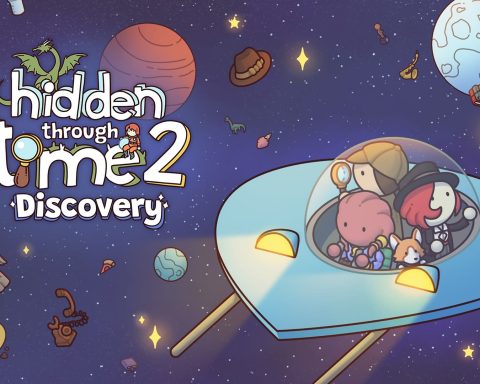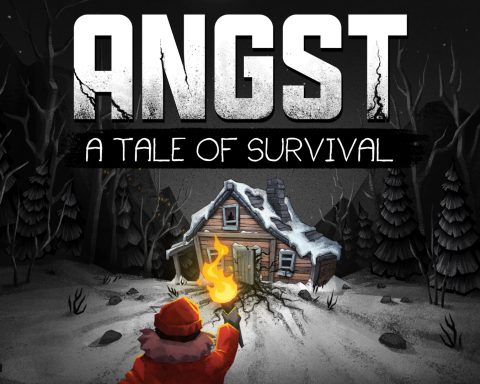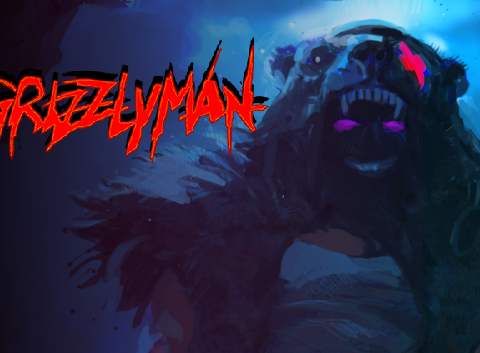Review by Matt S.
I was already sold on virtual reality, so it would be unfair to say Eagle Flight sold me on the technology. Perhaps it would be more reasonable to say that Eagle Flight has really been the first game that showed the full power of VR. As much as I love Hatsune Miku, her VR game/experiences are more quick rush than a deep dive into the power of VR – but Eagle Flight takes that dive and gives us something really special as a consequence.
That it was built in Unity is the most impressive thing of all. Truly, the industry has changed when the “free” engine originally built for indies can power the most impressive VR experience of all by a major publisher.
In Eagle Flight, you are the eponymous eagle, tasked with flying around Paris and completing a range of flight-based missions. This isn’t the Paris we know, however. Humans are gone and nature has retaken the city, making it beautiful by weaving plant life, zebras and elephants in with the crumbling monuments to humanity’s dominance over and decimation of the wild. It’s a natural environment now, and that makes it a joy to fly around, as you dart between the roots of plants one minute before lazily circling the Eiffel Tower the next. Flying is as simple as tilting your head (as in, your real head, in the real world) in the direction that you want the eagle to travel. Looking up will cause the eagle to rise. Looking down will cause him to plummet.
— Miku McMikuFace (@DigitallyDownld) November 13, 2016
For the first time since getting the PlayStation VR, a game has managed to trick my body into feeling motion. As I was looking down to get my eagle to dive, I felt a wave of motion going through me; perhaps it was emphasised by the neat effect of the beak and feathers of the eagle’s face bordering your vision. That border won’t get in the way of the gameplay, but it will subtly remind you of what it must be like to see the world through an eagle’s eyes. Because the game creates the sensation of motion so powerfully, I can’t recommend it to people who haven’t yet adjusted to VR and who feel motion sickness from it; but for the rest of us it’s a rollercoaster ride and a half.
The game’s objectives are incredibly simple. Each ‘mission’ in Eagle Flight is one of a couple of different flight-based minigames. You might find yourself flying around looking for feathers, trying to complete a maze of rings in a fast time, or navigate through some tight tunnels quickly. The most ‘game-like’ missions of all task you with shooting sonic ‘bullets’ at vultures, crows, or other enemies, in order to knock them out of commission. These games are no more complex than arcade game rides, and the ‘shooting’ minigame is completely bloodless (shoot an enemy and he just pops out of existence). It could be tempting to argue that this is all too simple, but getting a top rating on the difficult missions is really quite tricky, so there’s a lot of value in trying to perfect your skills as an eagle. Those missions are introduced with short nature documentary-style voiceovers, which tell a simple but effective story of the struggles of wild animals.
Outside of the missions you’ve got the freedom to fly around Paris and collect various collectibles that Ubisoft has scattered around the ‘open world’. For the first time ever I felt that Ubisoft’s commitment to sticking endless collectibles in its games has paid off; for Eagle Flight in particular, the joy of simply flying through the world made me want to track down all the feathers and fish as I lazily soared around the environments. While there was obviously the need to give people a game, the real strength of Eagle Flight is simply in existing in the world. That’s a connection with a gameplay space that I know developers of open world games are constantly striving to achieve, but have never managed to do so previously, as far as I’m concerned.
There’s even a multiplayer mode, and against all odds, I really like this one, as hard as it can be to find a match (seriously people, get off Battlefield and Call of Duty and play something good for the soul for a change). In Eagle Flight two teams of up to three players are tasked with collecting some prey that appears somewhere in Paris, and carting it back to their respective nests. Naturally the eagles have access to their sonic ‘bullets’, so each game quickly becomes a real dogfight as the incredibly agile eagles attempt to out-manoeuvre and pin one another down, and as whichever eagle gets to the prey desperately tries to avoid getting shot while his/her two allies run interference. It only takes a single shot to take down an enemy, so actually being good at Eagle Flight’s multiplayer takes a lot of skill. Sadly, as I mentioned, it’s just not that populated, whether that’s because the number of people with VR out there is still relatively low, or because people won’t buy games that don’t involve exploding skulls. Either way, it’s disappointing, because Eagle Flight is the most fun I’ve had with multiplayer since Overwatch.
You can tell that this was a small project from Ubisoft, and I wouldn’t be surprised if it was actually a tech demo the Ubisoft Montreal studio created to experiment with VR internally, before realising that there was a really good game in there. But it’s a small game that shows off all the artistic talents of the team. There’s a real joyfulness in the concept of flight, as enabled by VR, and Unity has never looked better; if this is a sign of things to come from that engine then we’re in for some wild times as developers of all sizes start creating more VR content for it. There’s a purity and innocence to Eagle Flight so completely wondrous to behold that I wish Ubisoft created more of these kinds of games.
– Matt S.
Editor-in-Chief
Find me on Twitter: @digitallydownld

